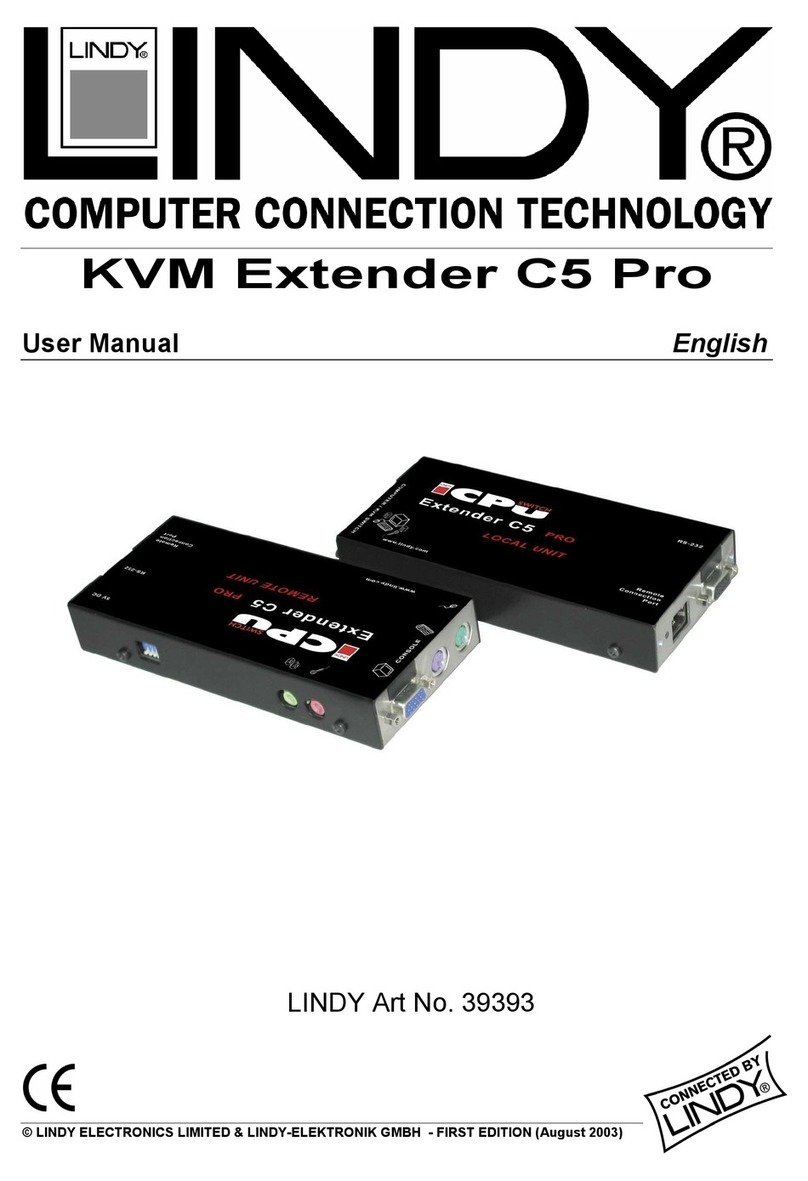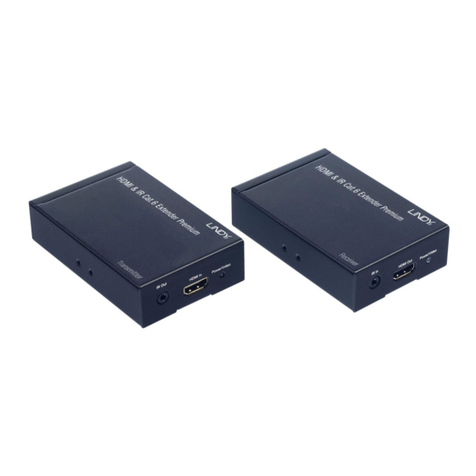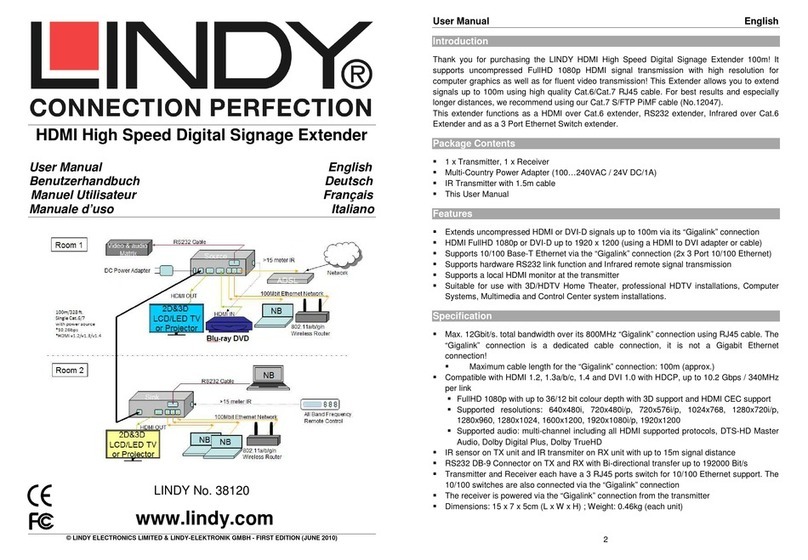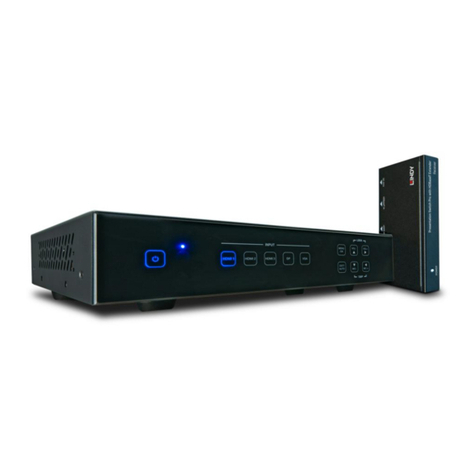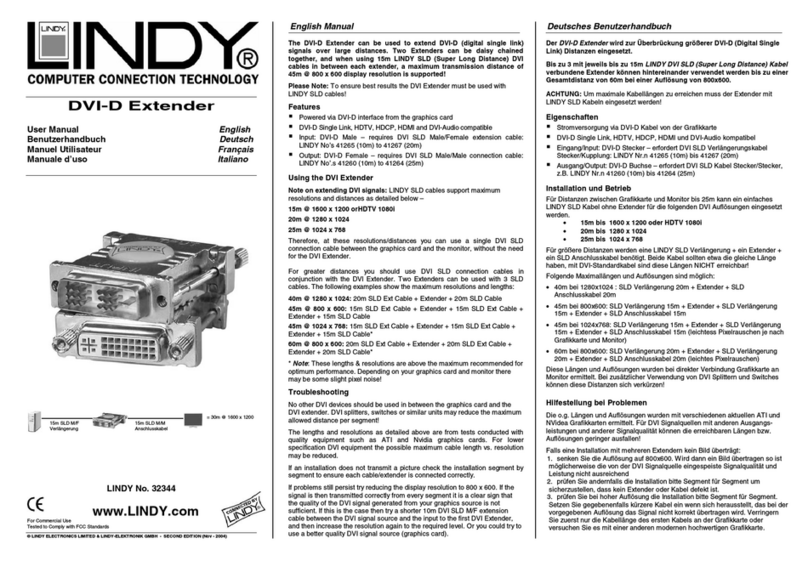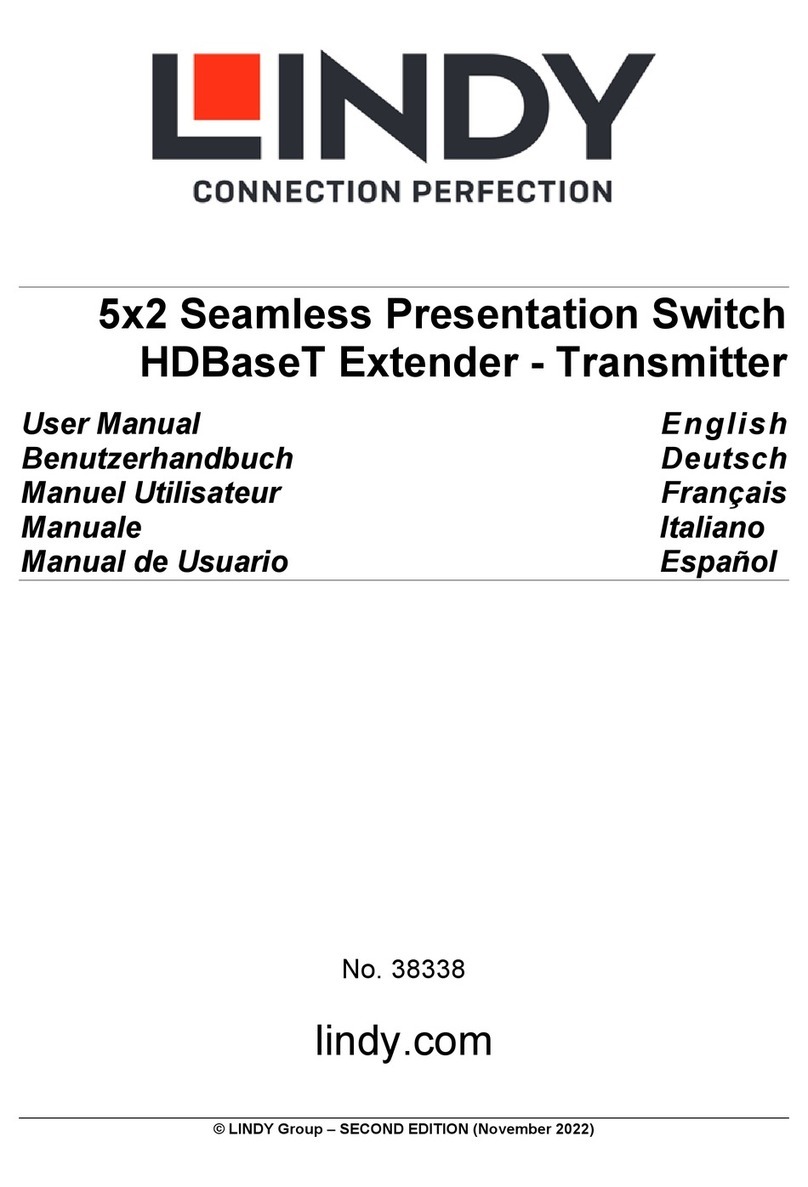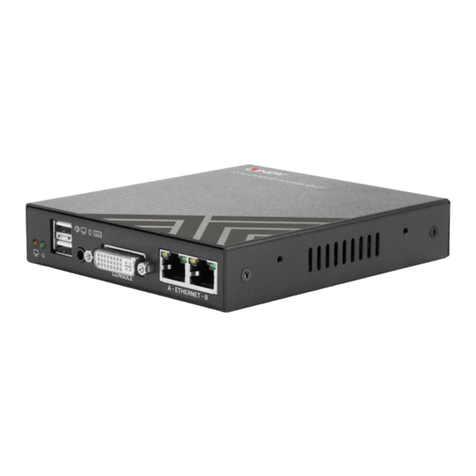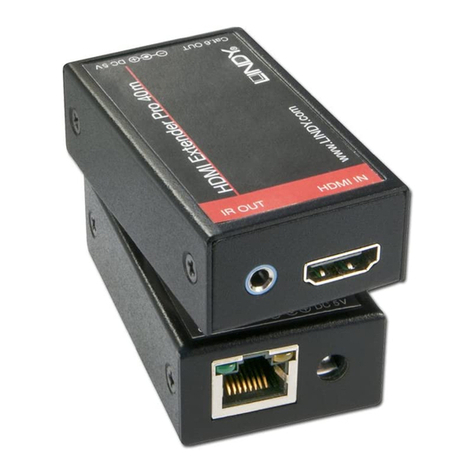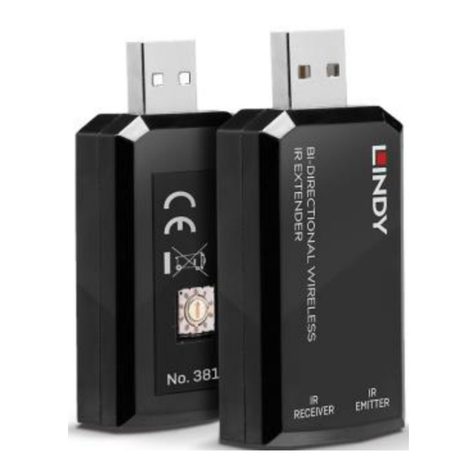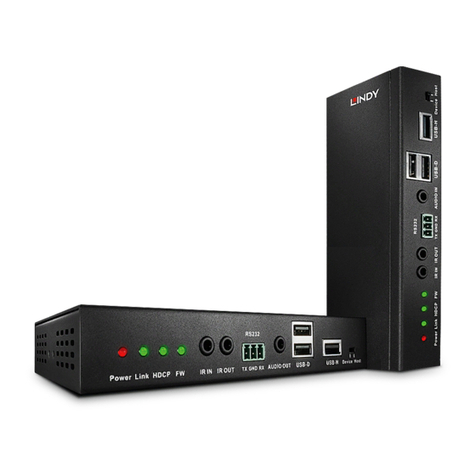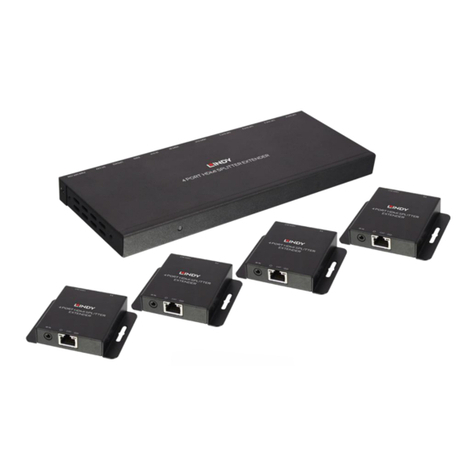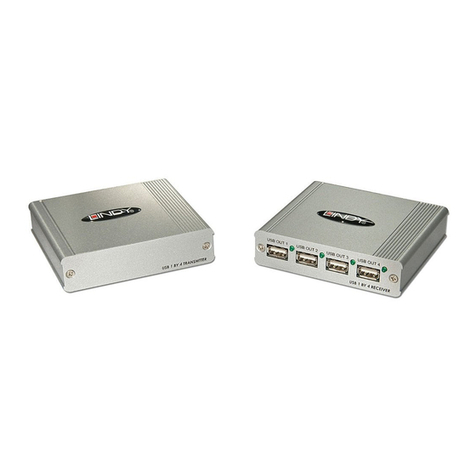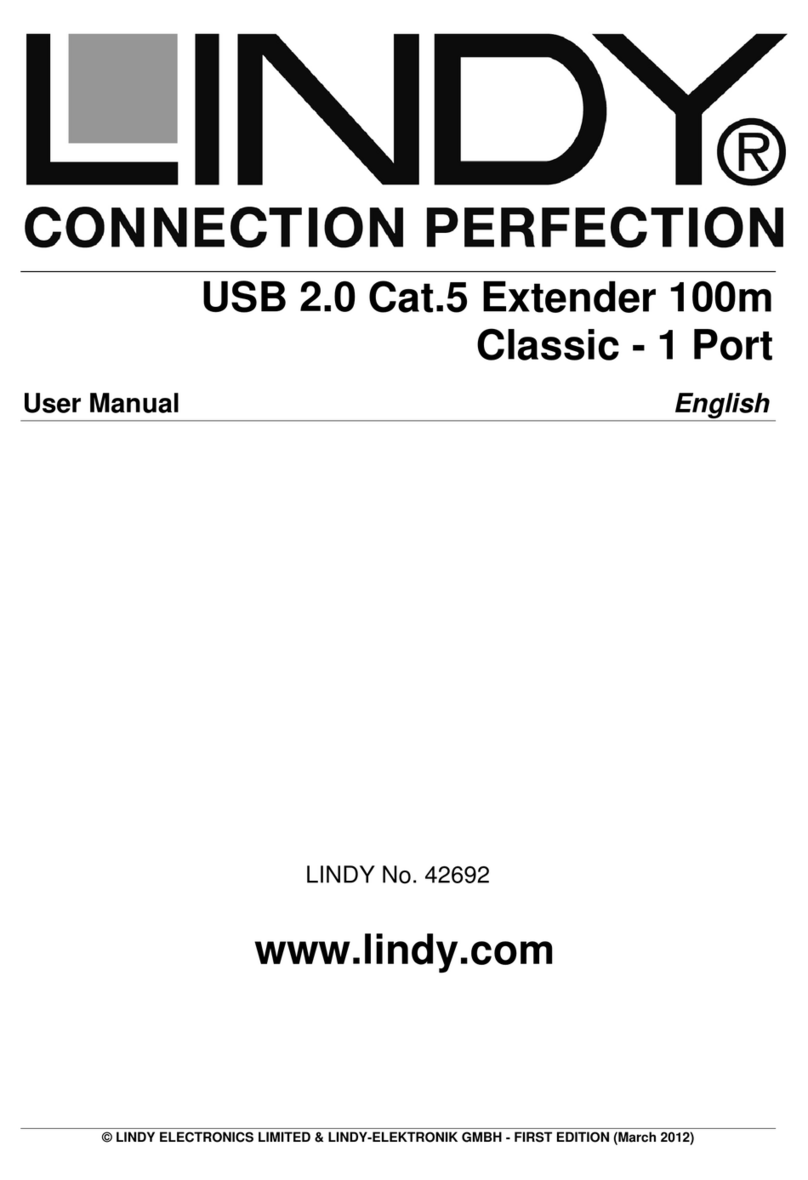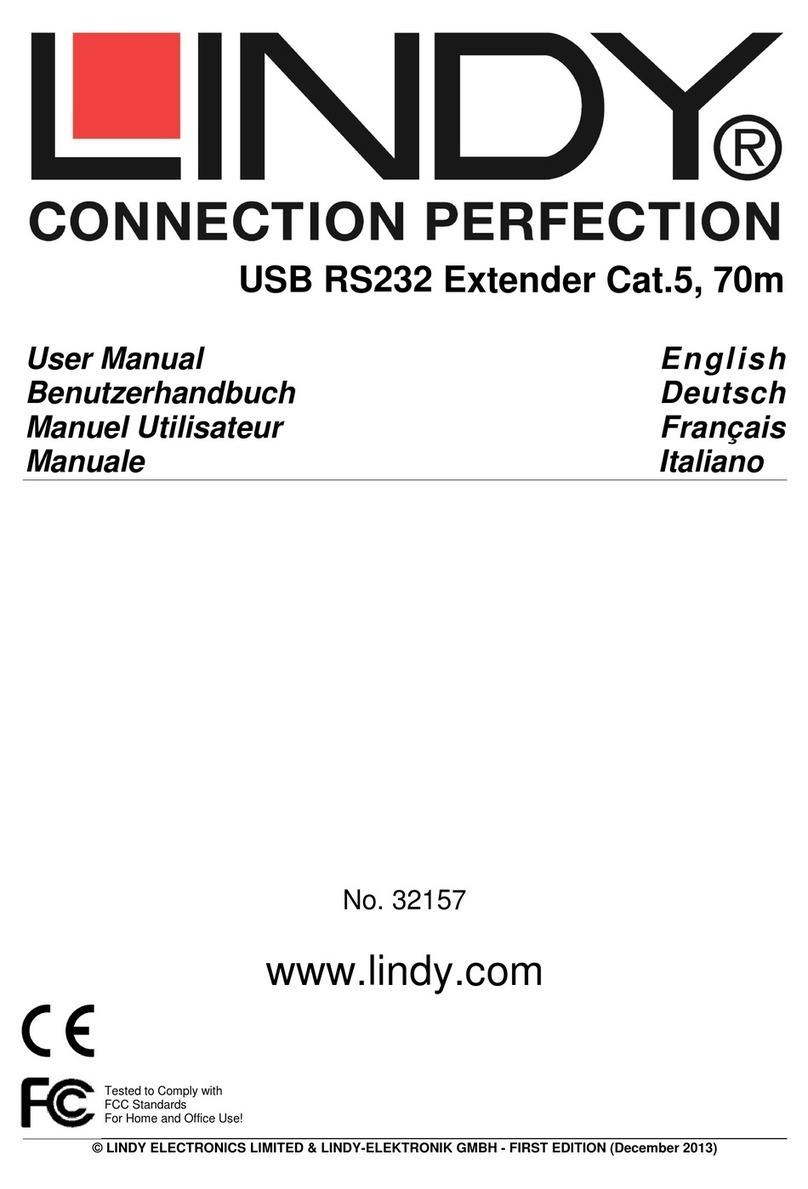Manuel Utilisateur Français
Installation
Avant de démarrer l’installation, assurez-vous que tous les périphériques sont éteints.
Les points suivants sont pour une installation en HDMI, si vous utilisez des équipements DVI: vous devrez
remplacer les câbles HDMI avec des câbles HDMI vers DVI.
1. Connectez votre source HDMI à l’émetteur fibre optique, en utilisant un câble HDMI (longueur
maximale : 5m).
2. Retirez les protections des ports fibre optique LC ou LC des boîtiers émetteur et récepteur.
3. Connectez une extrémité d'un câble duplex vers le port optique de l'émetteur et l'autre extrémité au
port du récepteur. Merci de vérifier que les connecteurs LC ou LC sont totalement enfoncés. La
connexion est de type droite 1 :1 et PAS de type croisée comme c'est parfois le cas pour certains
câbles LC ou LC Duplex. Si vous avez un câble LC ou LC Duplex croisé, merci de décroiser les
connecteurs.
4. Utilisez un autre câble HDMI (longueur maximale: 5m) pour connecter votre écran /projecteur HDMI
au port HDMI du récepteur.
5. Connectez les alimentations DC à l’émetteur et récepteur, respectivement.
6. Allumez votre source HDMI et votre écran pour terminer l’installation.
Aussi bien qu’un signal HDMI, l’extender fibre optique peut répéter des commandes/signaux IR, avec
l’utilisation du kit répéteur IR (N° Art. 38006), vous permettant de contrôler votre source HDMI jusqu’à
3000m. Connectez simplement le répéteur infrarouge (IR), comprenant un émetteur et un récepteur, aux
ports de l’émetteur et récepteur de cet extender fibre optique. Cette fonctionnalité est fournie avec l’HDMI
CEC, qui est justement pris en charge par cet extender.
Dépannage
Il n’y a pas d’affichage sur l’écran.
Note: si le signal source et le signal d’affichage prend en charge un espace colorimétrique plus haut qui
requière plus de 13Gbit/s de bande passante, par ex. YCbCr 4:4:4 8 bit @ 60 Hz, vous n’aurez pas
d’affichage car la source HDMI va automatiquement (en raison de la communication EDID) transmettre
l’espace colorimétrique le plus haut qui excède la bande passante disponible sur l’extender. Dans ce cas
vous devez forcer la source HDMI à transmettre un espace colorimétrique plus bas afin d’obtenir une
image.
Vérifiez que les prises DC et Jack sont fermement connectées (sur les 2 unités de l’extender).
Vérifiez que les connecteurs fibre optique LC ou LC sont connectés et que la LED “Link Status” est
allumée. Si ce n'est pas le cas, vérifiez bien que vos câbles soient de type droits 1 :1.
Vérifiez que la source HDMI et que l’écran sont allumés et actifs
Eteignez les appareils, puis allumez les dans l’ordre: d’abord, l’émetteur et le récepteur, puis l’écran,
et en tout dernier: la source.
Soyez sûr que vous n’avez pas interverti les fibres duplex.
Réduisez la longueur du câble HDMI utilisé, ou utilisez un câble HDMI de meilleure qualité.
Si vous utilisez un équipement DisplayPort, danscertains cas vous pourrezrencontrer des problèmes
de compatibilité matérielle entre source, adaptateurs, l’extender et l’appareil de destination (moniteur).
Le DisplayPort suit une approche technologie complètement différente par rapport à l’HDMI et la
conversion peut révéler des incompatibilités. Les adaptateurs listés dans la section Spécifications ont
été testés dans différents cas de figure. Les informations peuvent être trouvées sur le site internet
LINDY. Il est aussi possible d’utiliser une combinaison HDMI et DisplayPort à chaque extrémités de
l’installation. Merci de prendre contact avec le support LINDY si vous ne parvenez pas à régler le
problème.
